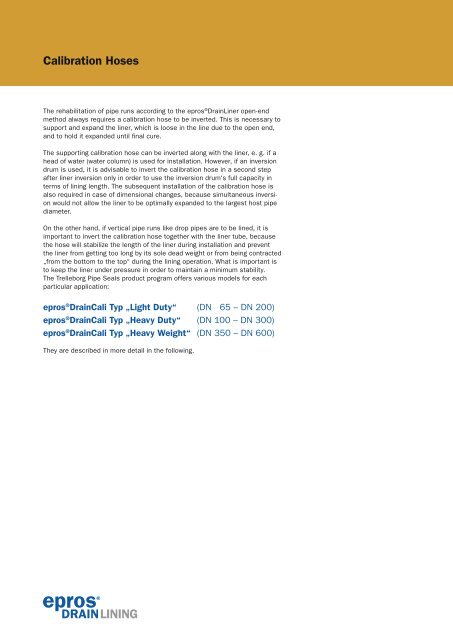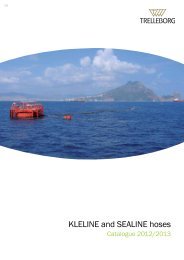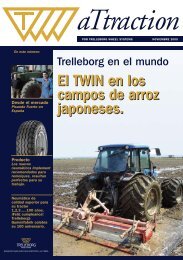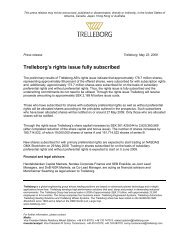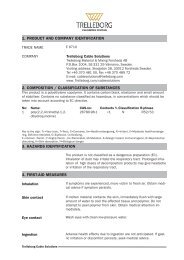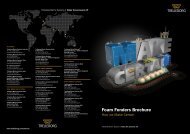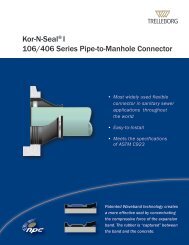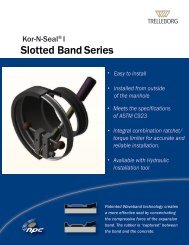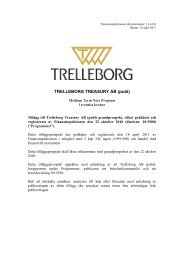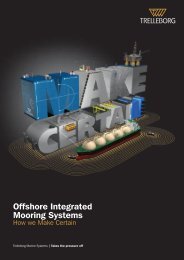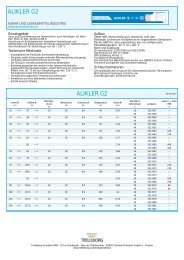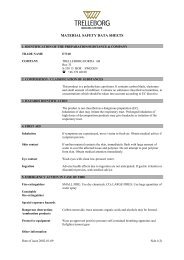epros®DrainLiner Program - Trelleborg
epros®DrainLiner Program - Trelleborg
epros®DrainLiner Program - Trelleborg
You also want an ePaper? Increase the reach of your titles
YUMPU automatically turns print PDFs into web optimized ePapers that Google loves.
Calibration Hoses<br />
The rehabilitation of pipe runs according to the epros ® DrainLiner open-end<br />
method always requires a calibration hose to be inverted. This is necessary to<br />
support and expand the liner, which is loose in the line due to the open end,<br />
and to hold it expanded until final cure.<br />
The supporting calibration hose can be inverted along with the liner, e. g. if a<br />
head of water (water column) is used for installation. However, if an inversion<br />
drum is used, it is advisable to invert the calibration hose in a second step<br />
after liner inversion only in order to use the inversion drum‘s full capacity in<br />
terms of lining length. The subsequent installation of the calibration hose is<br />
also required in case of dimensional changes, because simultaneous inversion<br />
would not allow the liner to be optimally expanded to the largest host pipe<br />
diameter.<br />
On the other hand, if vertical pipe runs like drop pipes are to be lined, it is<br />
important to invert the calibration hose together with the liner tube, because<br />
the hose will stabilize the length of the liner during installation and prevent<br />
the liner from getting too long by its sole dead weight or from being contracted<br />
„from the bottom to the top“ during the lining operation. What is important is<br />
to keep the liner under pressure in order to maintain a minimum stability.<br />
The <strong>Trelleborg</strong> Pipe Seals product program offers various models for each<br />
particular application:<br />
epros ® DrainCali Typ „Light Duty“ (DN 65 – DN 200)<br />
epros ® DrainCali Typ „Heavy Duty“ (DN 100 – DN 300)<br />
epros ® DrainCali Typ „Heavy Weight“ (DN 350 – DN 600)<br />
They are described in more detail in the following.<br />
DRAIN LINING


